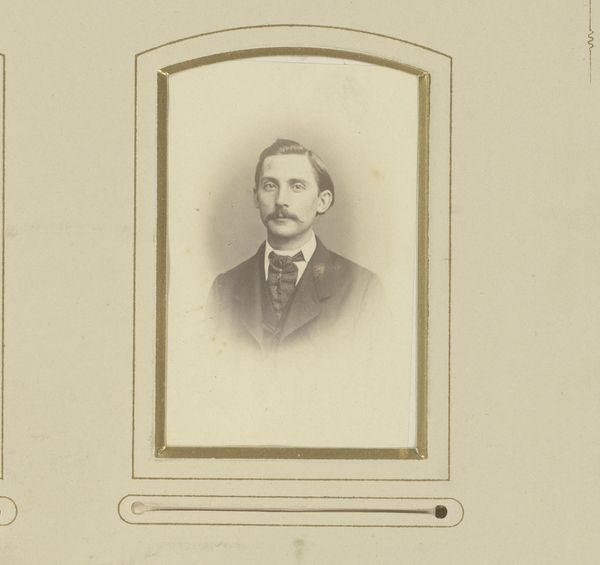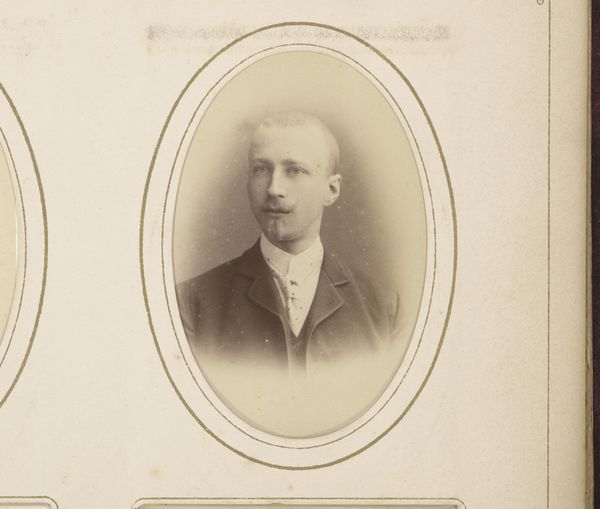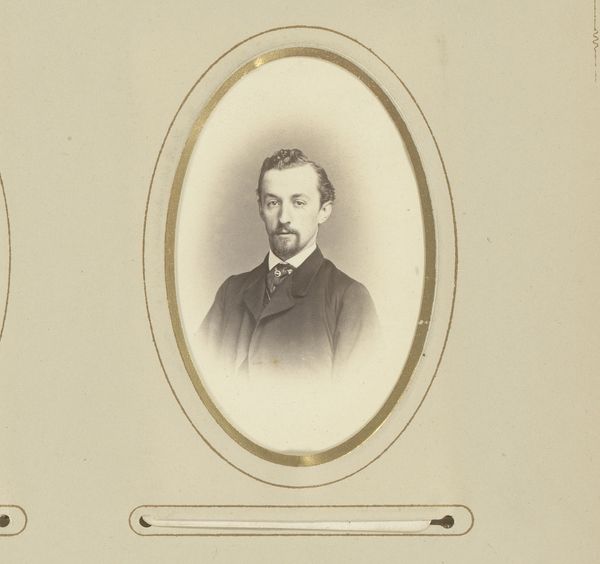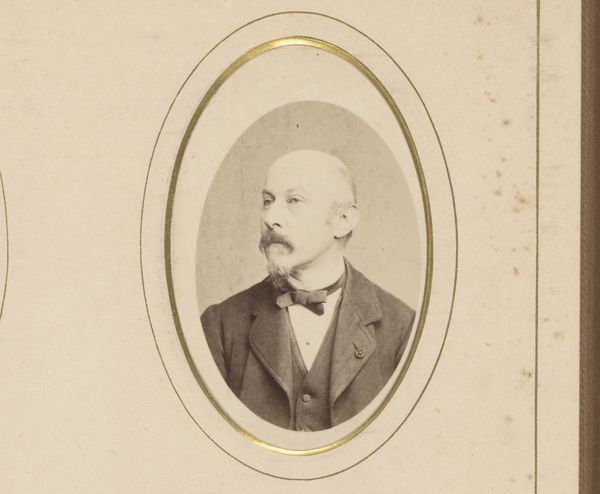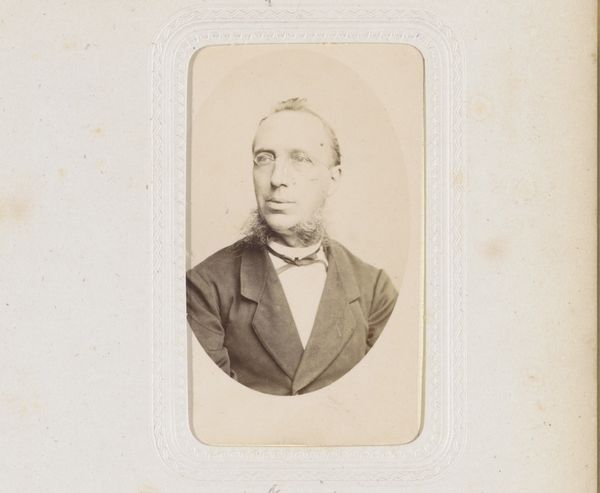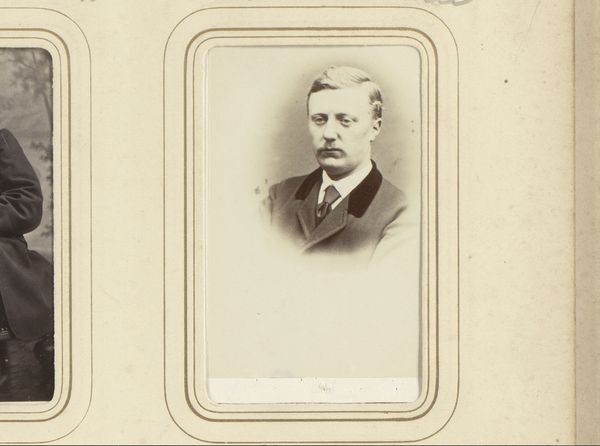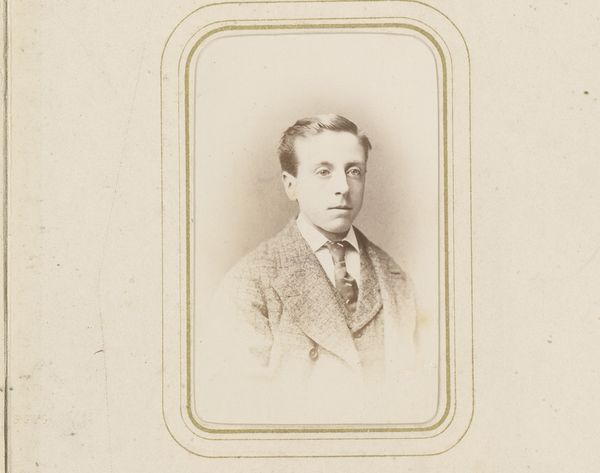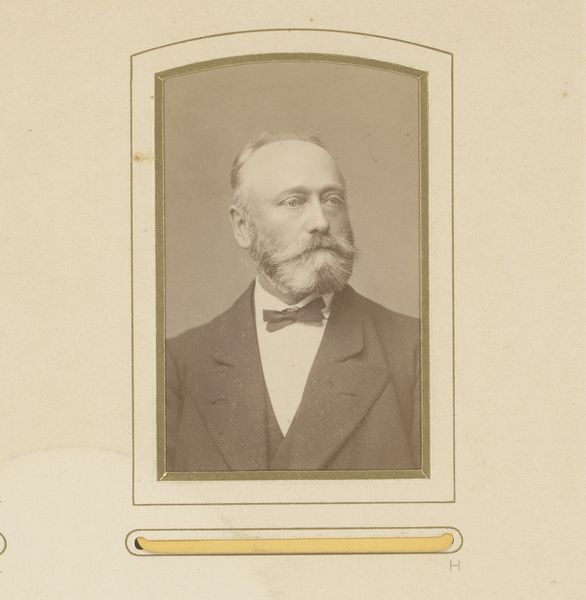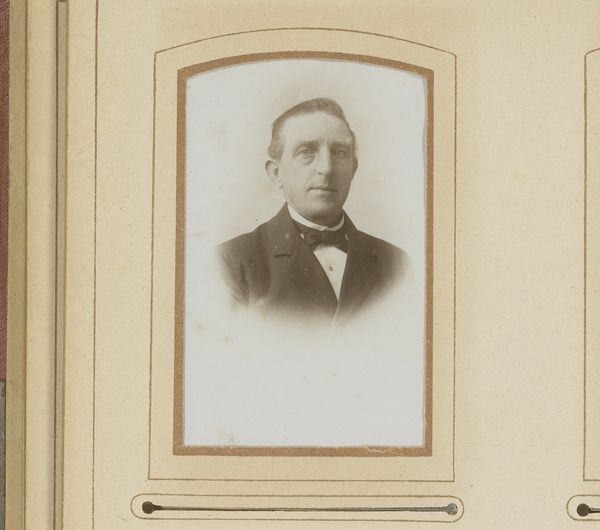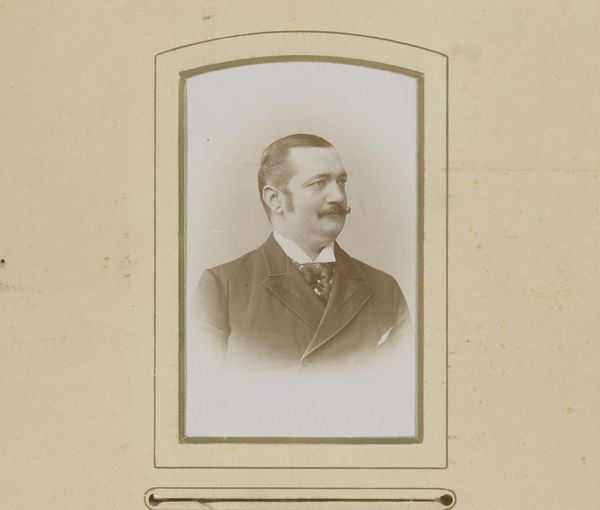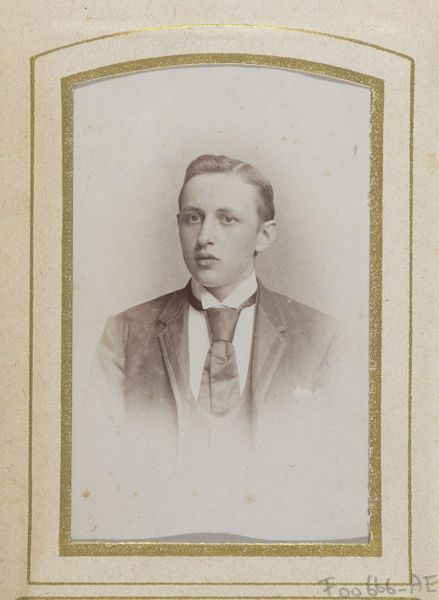
photography, gelatin-silver-print
#
portrait
#
photography
#
historical photography
#
gelatin-silver-print
#
realism
Dimensions: height 82 mm, width 50 mm
Copyright: Rijks Museum: Open Domain
Curator: Let's consider this arresting portrait from between 1858 and 1890. It's an albumen silver print by A. Bõeseken titled, "Portret van een man met snor, baard en vlinderstrik"—or in English, "Portrait of a man with mustache, beard, and bow tie." What are your immediate thoughts? Editor: There’s something stark and rather poignant about this image. The limited tonal range gives it a muted feeling. Curator: Indeed, the very nature of early photographic processes plays a crucial role here. Looking at the man's dress, it firmly situates him in a rapidly changing social landscape. Who had access to photographic portraits and how might we understand that now? Editor: Good question. We're talking about gelatin silver prints here. These prints were integral to the mass dissemination of imagery, a point when photography transitioned from specialist endeavor to more widespread commercial activity. He likely came from a specific social bracket and perhaps it gave access to enhanced power dynamics. Curator: Absolutely, the photographic portrait itself became a powerful tool for self-representation within specific societal strata. Gender norms also come into play. The subject is posing with decorum to embody the bourgeoise ideology. Editor: And consider the economic realities—the rise of photography studios created work. We're talking labor, craft. This simple image reflects a very tangible shift in production. Curator: Precisely, analyzing photography provides insight on evolving technological means as well as historical power relations. Photography captures the shifting role of gender roles during a particular moment in time. It serves as a window into a vanished world, urging a dialogue on representation, agency, and the means by which we create and interpret individual identity within societal shifts. Editor: Indeed, a photo that seems so simple really prompts you to consider just how it got made, how many people it impacted directly and indirectly. That alone is pretty special. Curator: And ultimately, how we can learn more about who had the power of visibility and representation in those historical moments.
Comments
No comments
Be the first to comment and join the conversation on the ultimate creative platform.

